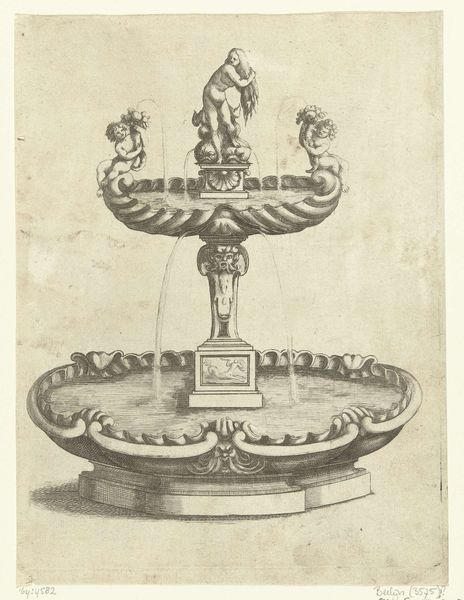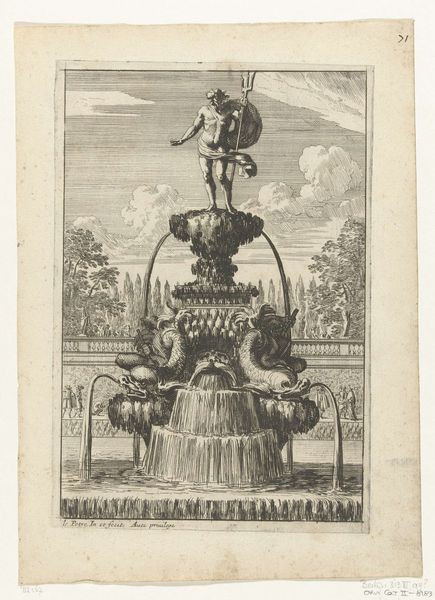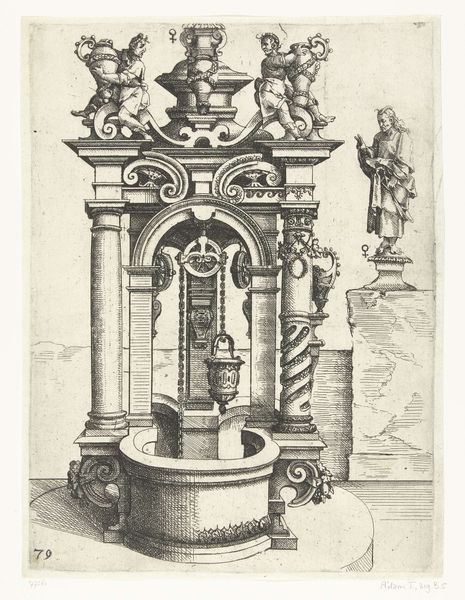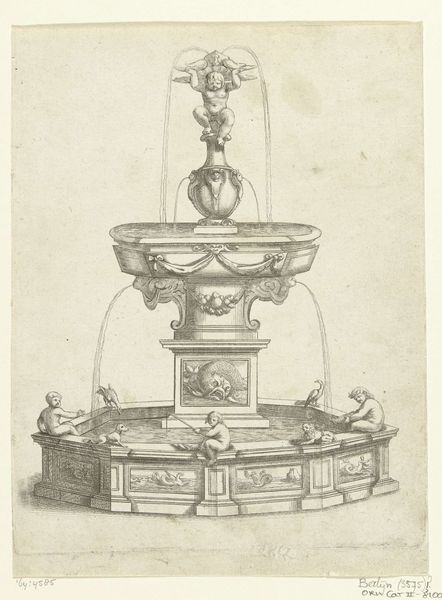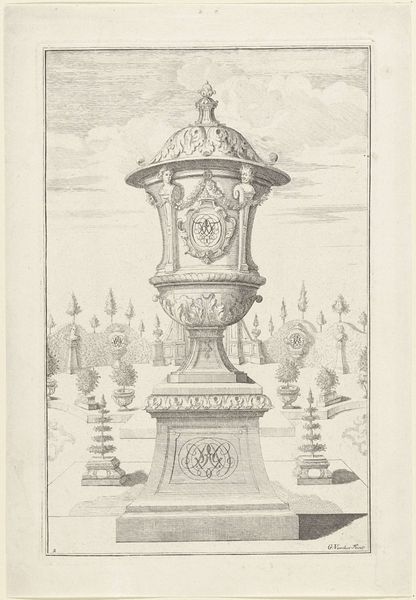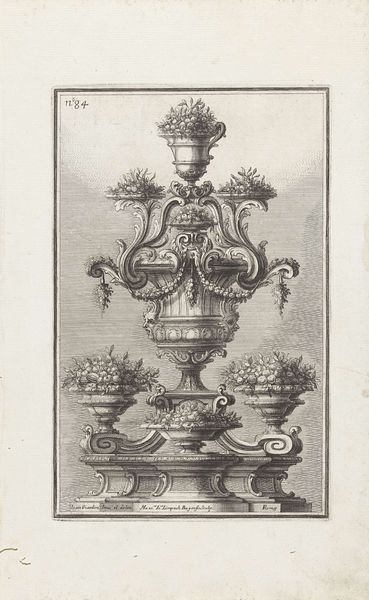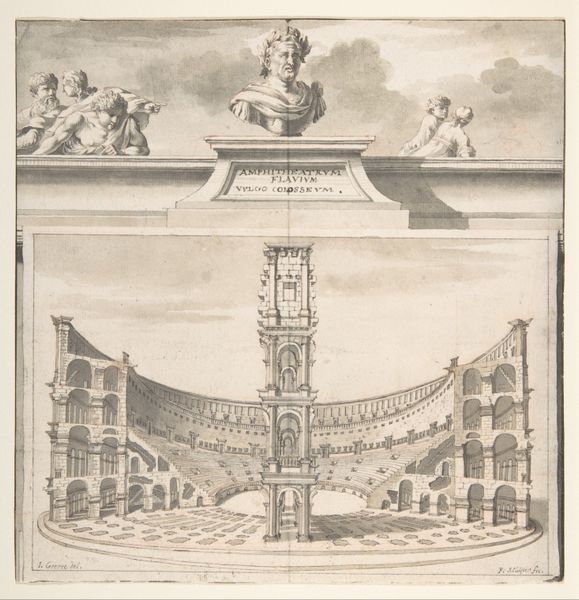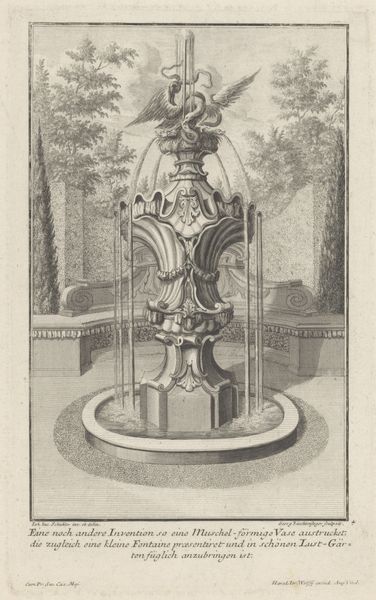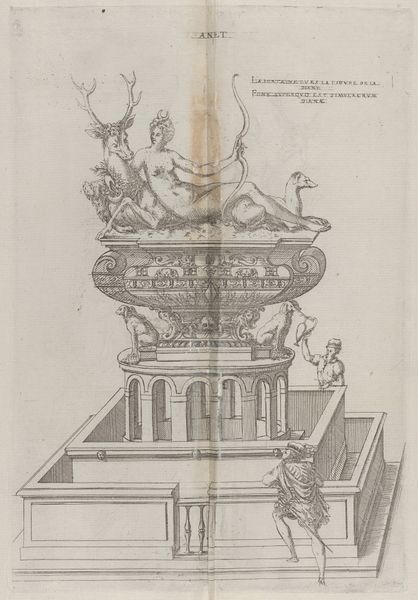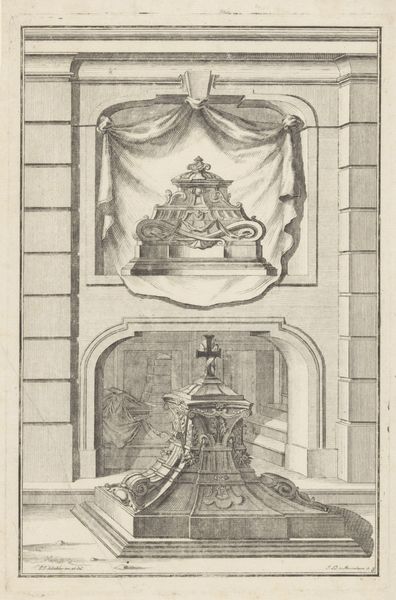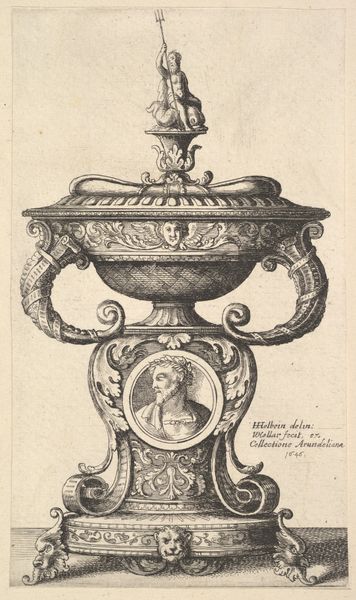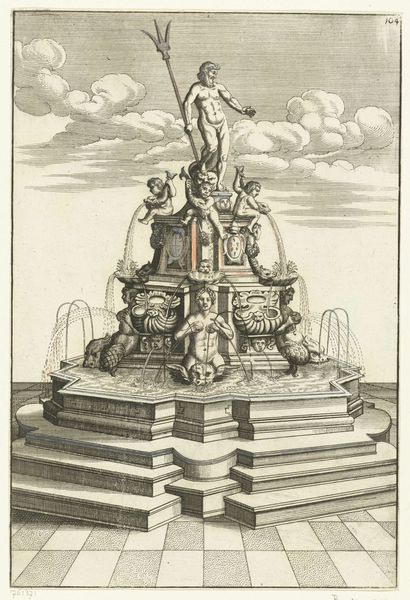
Fontein in de tuinen van Villa Doria Pamphilj te Rome 1653 - 1691
0:00
0:00
giovannibattistafalda
Rijksmuseum
drawing, print, engraving
#
drawing
#
baroque
# print
#
landscape
#
form
#
geometric
#
line
#
cityscape
#
genre-painting
#
engraving
Dimensions: height 356 mm, width 245 mm
Copyright: Rijks Museum: Open Domain
Curator: Look at this engraving by Giovanni Battista Falda, dating from 1653 to 1691, titled "Fontein in de tuinen van Villa Doria Pamphilj te Rome." It's currently held here at the Rijksmuseum. Editor: It strikes me as remarkably composed. The fountain is rendered in such detail, and its symmetrical construction against the open sky creates a visually compelling spectacle. Curator: Absolutely. Falda’s depiction captures the Baroque obsession with grandeur. We must remember that fountains, such as this one in the gardens of Villa Doria Pamphilj, served as symbols of power and wealth during this era, visually reinforcing the aristocratic control over resources. They represent Rome’s cultural dominance. Editor: I am intrigued by how Falda uses line and form to express both geometric rigidity and the natural dynamism of water. The engraved lines beautifully depict the cascading water while meticulously delineating each tier and decorative element of the fountain’s design. It shows such skill. Curator: Precisely. The geometric structure of the fountain provides an anchor for understanding the power structures in seventeenth-century Rome. It's about asserting human control over nature, and the social implications of this manipulation, especially when considered in the context of a growing population. Editor: It’s fascinating to consider how an artwork so meticulously crafted celebrates nature within such structured parameters. The lines feel simultaneously architectural and organic. The semiotics are clear; it blends nature and geometric structures in such compelling forms. Curator: Indeed, it's about Baroque culture attempting to legitimize itself by showcasing manipulated nature—gardens became a stage for performances of social superiority. I find this particular depiction fascinating as a social commentary on the aristocracy of the period. Editor: Examining this engraving has heightened my appreciation for its linear sophistication and how Falda used his materials to express both control and fluid motion within his composition. Curator: I agree, and for me, revisiting the sociopolitical contexts of its creation allows me to see its role in communicating status and the inherent social divisions of the time even more clearly.
Comments
No comments
Be the first to comment and join the conversation on the ultimate creative platform.

